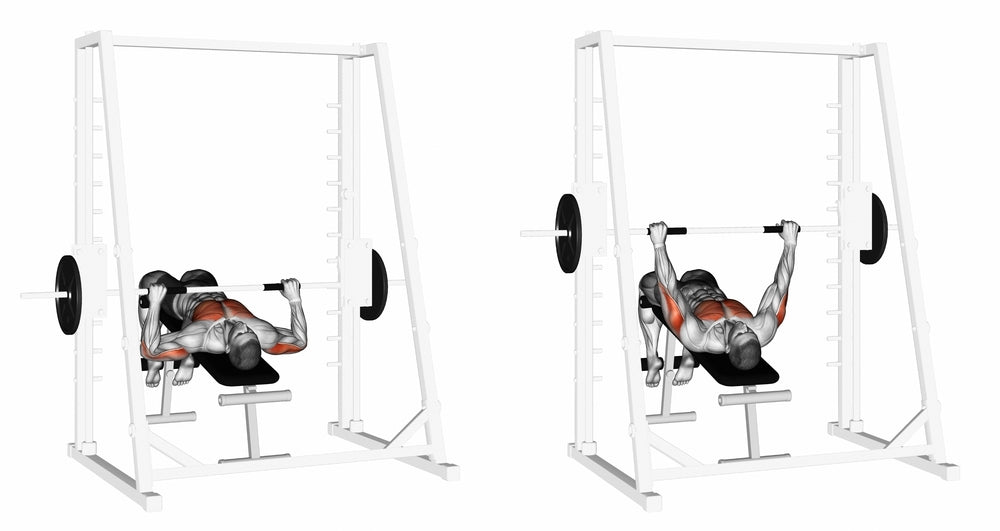Exercise Anatomy
Decline Press
The Decline Press is a potent upper body exercise that targets the lower part of the chest, emphasizing muscle engagement in a unique downward angle. Performing this exercise on a decline bench provides a distinctive challenge, effectively isolating the lower chest muscles. By incorporating Decline Press into your workout routine, you can sculpt a well-defined and balanced chest, adding depth and strength to your physique. Elevate your training regimen with this exercise to enhance overall chest development and achieve a more comprehensive upper body workout.

Major Muscles and Actions Involved
The Decline Press primarily involves shoulder extension and elbow flexion as the key joint actions. During this exercise, the muscles engaged include the pectoralis major (lower portion), anterior deltoid, and triceps brachii. The unique downward angle of the decline bench places particular emphasis on the lower chest, making it an effective way to isolate and strengthen this specific muscle group.

Sports Uses
The Decline Press is particularly advantageous for athletes involved in sports that demand powerful and well-defined lower chest strength. Athletes engaged in activities such as gymnastics and diving, where upper body control and strength play a crucial role, can benefit from the specific muscle engagement offered by the Decline Press. Additionally, individuals participating in contact sports like rugby or American football, where forceful pushing movements are essential, may find this exercise beneficial for enhancing lower chest power. By incorporating Decline Press into their training regimen, athletes can target and develop the lower chest muscles, contributing to improved performance in activities that require explosive upper body strength and control.
Exercise Tips
- Proper Bench Angle: Set the decline bench to an angle of approximately 15 to 30 degrees to effectively target the lower chest.
- Grip Placement: Maintain a shoulder-width grip on the barbell, ensuring it feels comfortable and stable in your hands.
- Controlled Range of Motion: Lower the barbell in a controlled manner until it lightly touches the lower chest, avoiding bouncing to maintain tension on the muscles.
- Elbow Positioning: Keep your elbows at a 90-degree angle to the torso throughout the movement, preventing excessive flaring or tucking.
- Breathing Technique: Inhale as you lower the bar and exhale forcefully as you press it back up. This breathing pattern enhances core stability and power during the exercise.
- Weight Selection: Begin with a moderate weight to perfect your form before gradually increasing the load. Ensure the weight allows for proper technique and completion of the desired repetitions.
- Unique Muscle Engagement: Recognize the unique emphasis on the lower portion of the chest during Decline Press. Focus on contracting the lower pectoralis major for optimal results.
- Full Range of Motion: Strive for a full range of motion, extending your arms without locking your elbows at the top of the movement to maximize muscle engagement.
- Variations for Versatility: Experiment with different grip widths or use dumbbells instead of a barbell to introduce variety and target the muscles from different angles.
- Consistency in Tempo: Maintain a consistent lifting tempo throughout the exercise, avoiding sudden or jerky movements. This promotes muscle control and reduces the risk of injury.
Incorporating these tips into your Decline Press routine can help optimize muscle engagement and contribute to a well-rounded and powerful lower chest development.
